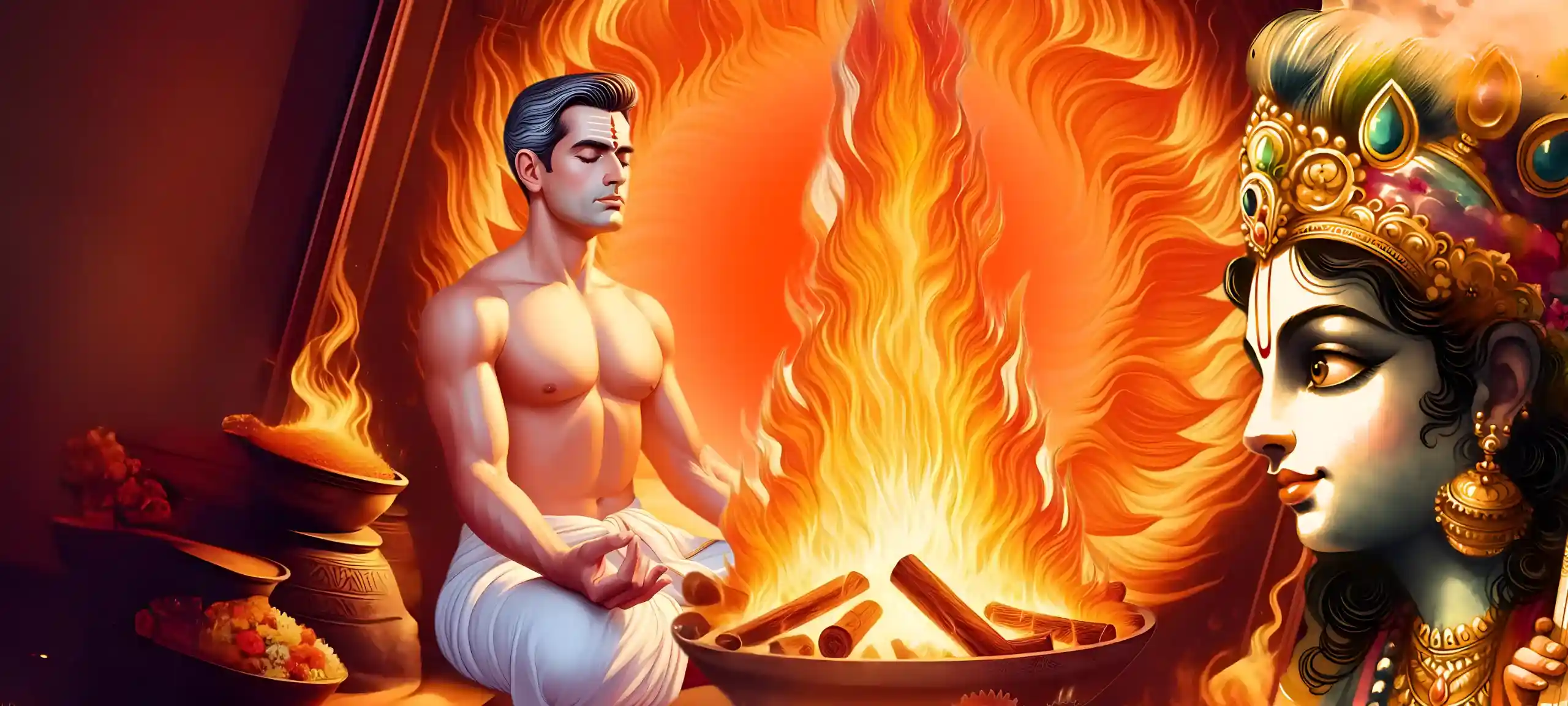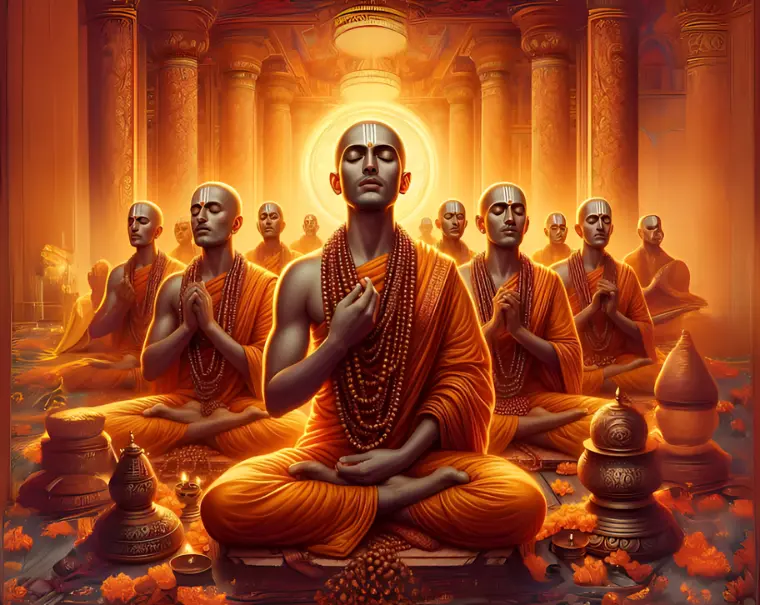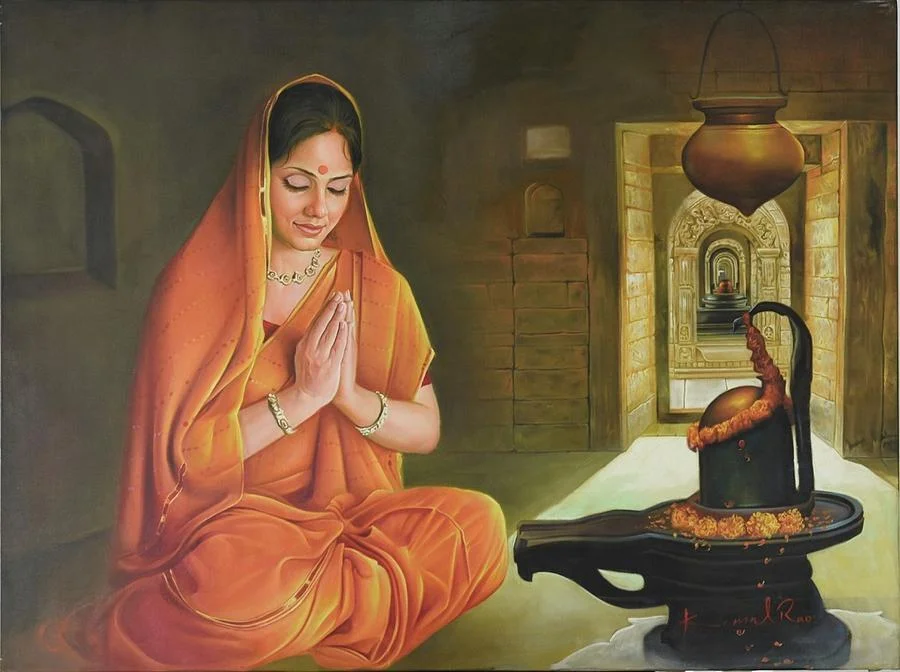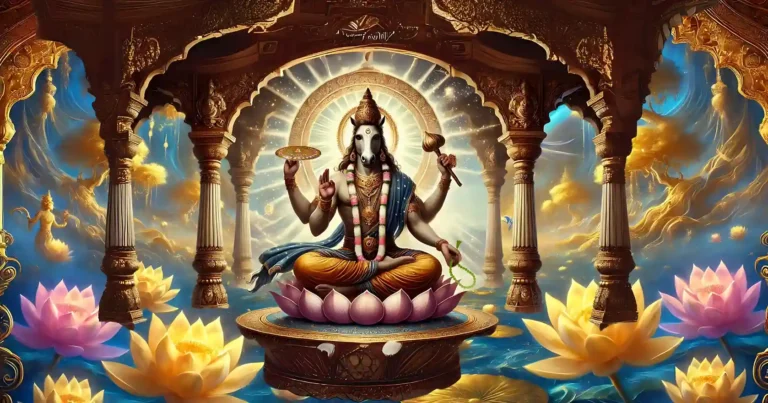Please Like the Blog and Share it for Maximum Reach
Table of Contents
Uparati, is the 3rd treasure of the Shad Sampat. It manifests on observing and applying Viveka, Vairagya, Sama, and dama. It is a gift that is bestowed upon the spiritual aspirant.
Difference Between Sanyasa and Uparati
The classical definition of Uparati is cessation from Worldly activities (karma). Some allude it to Sanyasa. However, Uparati focuses on mentally relinquishing attachment towards worldly activities, while Sanyasa means formally entering into the monastic stage of life. It involves giving up all worldly attachments, including family, possessions, and societal roles, in Pursuit of Spiritual Liberation (Moksha).
A Sanyasi has nothing to do with worldly affairs as he is ordained to carry out spiritual practices, often characterized by living in seclusion, meditation, and studying scriptures. However, Uparati can be bestowed upon anyone, at any stage of life and while executing one’s duties towards family. Uparati has many connotations.
Relenquishing Ritualistic Practices for Benefits
One definition of Uparati stresses abandoning ritualistic practices that yield materialistic fruits. While Sama and Dama mechanically train our mind and senses not to pursue objects, Uparati teaches us genuine- inner withdrawal, wherein desire to acquire completely perishes. A sadhaka at this stage realizes the fallacy of religious and cultural practices that are performed for superficial reasons, like begetting a son by taking a dip in the holy waters, increasing social status by conducting bhandaras(Serving Food to the Poor and Needy and to Sadhus), conducting a homa for welfare of family, etc.
These religious rituals prescribed in the Vedas have a very temporary effect in the lives of people. Because their fruits are not everlasting, a sadhaka who has followed until this point of the Shad Sampat develops Uparati. Thus, Uparati teaches detachment from such empty ritualism.
Rituals and Practices that We Must Embrace
Instead, it promotes engaging in religious acts with full awareness and a sense of devotion, without getting caught up with their external forms. This is the true meaning of renouncing worldly activities. However, this does not mean that these practices or rituals are not potent or beneficial for spiritual aspirants. The main point to consider is the intention.
If we perform a Sunderkand Path (A religious ceremony for Sunderakand Recitation) to invite harmony in the household or nullify planetary effects, Uparati teaches us to leave the Path (holy reading). Though it is a religious activity, it is not necessarily a spiritual activity because the intention makes it mundane. However, if the Sunderkand Path is recited in the mode of devotion, to please Lord Rama and Lord Hanuman, Uparati teaches us to gracefully accept this ritual as it is enhancing us spiritually.
Religious activities, such as prayers, meditation, and rituals, when performed with the right intention, are tools for purifying the mind. They keep our minds occupied with the Lord and his pastimes.
Nature of Spiritual Practices When Uparati Dawns
Uparati may lead a person to shift focus from external rituals to more contemplative practices like meditation, self-inquiry, or devotion. The accuracy and intricacies of the rituals do not matter when done with devotion or as an activity for spiritual upliftment. The essence is to cultivate the right intention before commencing any activity, be it material or spiritual.
So called mundane activities like activities like nurturing a family, working, etc can also become supportive spiritual disicplines by adopting the right mood and intention. Uparati encourages one to move beyond ritualistic practices when they no longer contribute to inner growth, but it doesn’t mean giving up meaningful or essential spiritual disciplines.
Thus, if one is performing Agnihotra, Sandhyavandanam, etc as a discipline, the spiritual path does not advise one to abandon them as they massively contribute towards cleansing the mind and body. A spiritual practitioner shall follow these rituals as much as possible until there are superior indications from the Lord or Guru.
Sri Yajnavalkya Reveals the Impermanent Effects of Rituals
In the Brihadaranyaka Upanishad, in a conversation between Sage Yajnavalkya and Gargi, the former reveals:
Whosoever in this world, O Gargi, without knowing this Imperishable, offers oblations, performs sacrifices, and practices austerities, even for many thousands of years, finds all such acts perishable. Whosoever, O Gargi, departs from this world without knowing this Imperishable is miserable. But he, O Gargi, who departs from this world after knowing the Imperishable is a knower of Brahman.
This statement is the highlight of Uparati. One has to focus on knowing Brahman rather than adopting rituals for materialistic benefits.
Rejecting Culture and Focussing on Brahman
Though the senses are under control by the exercise of Dama, man’s quest for happiness is not yet directed completely inwards. Many resort to external practices or ceremonial activities that seem to assure abundance and happiness. As culture evolved, it became a necessary norm in many houses to observe fasts and festivals for certain fruits and fulfillment of desires.
However, a sadhaka must surpass all these traditional practices that bestow material benefits. We must focus on Brahman and get the liberating knowledge, rather than getting stuck in the loop of endless practices that yield transitory results.
The objective of all Karma Kandas, pujas, vratas, homas, etc is to give human beings a temporary feeling of relief and fulfillment. However, a true sadhaka hinges his attention on the eternal as everything except Brahman are merely temporary fixes.
A sadhaka in Uparati relinquishes all desire-oriented actions as they are not conducive towards the quest for Brahman. At this stage, the sadhaka becomes highly selective of what he wants to take into one’s consciousness and what needs to be outright rejected.
The Difference Between Uparati and Vairagya
Another connotation of Uparati is extreme refusal. It means inner withdrawal, turning the faculties of the mind from the world and situating it on a higher plane of consciousness. It is a practice that weeds out our attachment and inner frailties, now at the microscopic level. This term is closely related to Vairagya. However, the difference lies in the magnitude of renunciation. Vairagya deals with larger aspects and decisions of life.
For example: Leaving the job at an organization that engages in unethical dealings, Relocating to a spiritual land or Dham on finding the current city or people unconducive for spiritual pursuits, distancing or avoiding relatives who are not spiritually inclined, etc.
In the work example: The sadhaka may renounce his work upon finding a huge misalignment with his spiritual goals. So, Vairagya deals with major, macroscopic events and may sometimes require physical abandonment, although it also deals with internal changes.
To put simply, Vairagya means letting go of all the undesirable people and places that hinder one’s spiritual progress. Uparati, on the other hand, is more subjective and unique to an individual. It deals with the inner world rather than the exterior world of events. It forces an individual to begin the inquiry of knowing Brahman.
Test your Alignment with the Spiritual Subject Matter (only 7-8 Questions)
The scores generated in this Quiz are relative. There are no right or wrong answers. A percentage towards 100 indicates that you are more aligned to the overall subject matter.
Uparati: Complete Abstinence from Sexual Activities
Uparati also means abstaining from sexual activities. Only a sadhaka who has fully acquired the gems of Sama, Dama, and Uparati can be a perfect celibate. A Brahmachari is the one who maintains purity at all three levels, thought, word, and deed. When the senses are under control and when the mind is quiet, the inner drive to indulge in sexual activities perishes. This is an attainment of Uparati.
Difference Between Uparati and Dama
The physical practice of abstaining from sexual relations is Dama while Uparati focuses on the mental state of non-attachment to such desires. A person practicing Uparati experiences a natural withdrawal from the pull of sexual impulses, not out of repression but due to inner contentment and as a result automatically focuses on higher spiritual goals.
There is no longer a strong internal struggle with sexual desires because the individual has cultivated a state of mental peace and dispassion towards them. The sadhaka no longer feels it necessary to have emotional exchanges with others as the expectation of any kind of reciprocation diminishes or even culminates.
This does not mean that a sadhaka in a family becomes emotionless. Rather his/her association with other members becomes more genuine and soulful as there is no ulterior motive or expectations.
Thus, Uparati is indeed an exalted state, where the tranquility of the mind makes one a perfect recipient to absorb the knowledge of Brahman. He thus becomes a “Patra” or Vessel for attaining Brahma Vidya, effortlessly
Please Like the Blog and Share it for Maximum Reach













